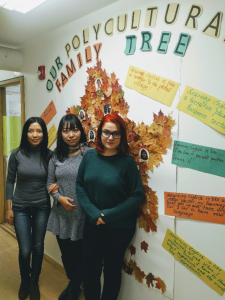Indigenization in the ESL classroom
Whenever I talk about Indigenization, I recognize that it’s often customary, in an Indigenous paradigm, to ‘situate’ myself in the work (Wilson, 2009)—I might talk about where I’m from, or my family, but I’ll give you the Coles Notes version. I’m originally from Newfoundland, traditional territory of the extinct Beothuk people. I grew up in Nova Scotia on the edge of a Mi’kmaq community; the Mi’kmaq are considered the founding people of Nova Scotia and are one of the signatory nations to the Peace and Friendship Treaties of that area. I’m living in Treaty 6 territory, which is a traditional gathering place for diverse Indigenous peoples; the Indigenous peoples of the Cree, Nakota Sioux, Dene, Blackfoot, Tsuu-t’ina, Iroquois, Ojibway, Continue Reading →

